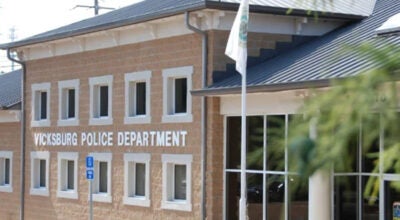Retired general interprets Civil War site
Published 12:00 am Sunday, March 15, 2015
A presentation on the preservation of The Battle of Raymond Civil War site began with a short slide show about the Battle of the Little Big Horn.
Brigadier General Parker Hills, speaking at a Rotary luncheon, explained that a huge prairie fire in 1983 burned away all the sage brush and tall grass and revealed to archeologists for the first time the ground of the battlefield.
“What caught my attention in 1986 was an article in National Geographic,” Hills said. “I was fascinated by this article because the archeology completely rewrote how that battle was fought. It taught us things we didn’t know.”
Hills was commanding some special forces soldiers who had been training at the Little Big Horn when on the plane ride back home he picked up a book published by those archeologists and was hooked.
The techniques of historical archaeology and forensic anthropology revealed exactly where many of the men fought at that battle, how they died, and what happened to their bodies at the time of or after death. It showed how the troopers were deployed, what kind of clothing they wore, the kind of equipment they had and how they fought.
It was those techniques described in that book and others that Hills relied on when he got the opportunity to see clearly the ground at the site of the Battle of Raymond.
“In Raymond, Mississippi on June 30, 2009, we acquired after a three year effort, 67 acres of the core battlefield,” Hills said. “We saved it from becoming a housing project.”
After swapping the farming rights to the battlefield in exchange for more property, a crop of beans were planted. After harvest Hills saw the ground as it was during the battle in 1863.
“When the crops came in in 2011 I looked out there and saw the ground for the first time,” Hills said. He realized then, that this what the archeologists saw in the prairie.
“We’ve got to get out there and start working,” he said. A national level reenactment was coming in 2012 and “I wanted to get on that battlefield before it was contaminated.”
Hills enlisted a couple of guys he trusted and using GPS technology they logged and described every item they found, labeled it and placed it inside a Ziploc bag, and then placed it inside a larger Ziploc bag with everything they found that day. Every item was then plugged into Google Earth and a picture began to emerge of the site.
Using historical records, bullets and other artifacts were categorized and placed on the battlefield exactly where it was found. Bullets were divided into dropped and fired subcategories. From there the items were divided again into Union or Confederate projectiles and flattened or not.
Hills was working on his book about the Vicksburg Campaign that he came across a woman from Seattle, Washington that had her great-great granddaddy’s diary. He was from the 20th Illinois who fought at the battle.
“The Rebs were 20 paces in front of us near a creek and when I poked my head around a tree I got hit by a squirrel rifle ball and it spun me around. I fell back three rods against the fence we had been fighting from,” the diary said.
This was news to Hills because nowhere in the historical record did anyone mention a fence.
“This fence has never been mentioned, so I go down to the creek and I pace off 20 paces from the creek and then I measure another 17 ½ feet,” Hills said. “We start looking and sure enough, within minutes we started finding the tell-tell evidence, dropped .58 cal. minie balls.”
“Soldiers fighting from a fixed position with a muzzle-loading weapon will drop a lot of bullets,” he said. “They are nervous and scared trying to get that thing in the barrel and you’re not going to go rifling in the grass to pick them up.”
The men saw a pattern of dropped and flattened projectiles that formed a nearly straight line. This was the fence line.
As the men researched newspaper accounts from the period they discovered an artist had been present at the battle and sketched it in detail. Theodore Davis had sketched the fence in his depiction of the battle. Upon further research, Hills came across a magazine article Davis had written in which he described how to sketch battles. In that article he included another sketch that had never been published.
Davis’ sketch depicts the 20th Ohio and the 20th Illinois infantry regiments fighting the 7th Texas infantry regiment. In the foreground is the right gun of Captain Samuel De Golyer’s 8th Michigan Battery. In the center is Colonel Edwin Stanton McCook of the 31st Illinois, who is limping off the battlefield using two rifles as crutches after receiving a military career-ending foot wound.
Using that sketch and the Google map of items found on the battlefield site, Hills was able to determine exactly where that sketch was made.
After going over the site for the seventh time Hills and his men found a naval button precisely where Davis sketched McCook limping off the field. That was puzzling and upon further research they learned that McCook had attended the Naval Academy at one time.
Through research they have been able to link other items found with the men who actually carried them.
It is this attention to detail that has made the Battle of Raymond site a special place to visit. Hills is driven to preserve this site for future generations. His efforts have led to cannon placements one-for-one depicting every cannon present in 1863. He has raised money through the speaking circuit to place historical markers at Confederate sites throughout the battlefield that are in line with those at Vicksburg National Military Park.
Hills is not finished at the site and approached the Friends of Raymond at their board meeting Thursday night about funding more markers at the site to the tune of $30,000. He got his money and should have the Union markers placed before the end of the year.






